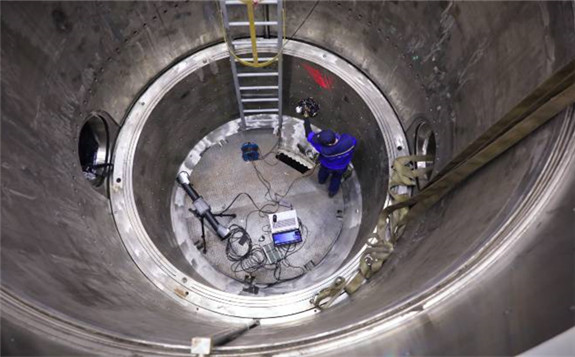
The MBIR is a 150 MWt, sodium-cooled fast reactor with a design life of up to 50 years. It will be a multi-loop research reactor capable of testing lead, lead-bismuth and gas coolants, and running on MOX (mixed uranium and plutonium oxide) fuel.
Russia’s Research Institute of Atomic Reactors (NIIAR) intends to set up on-site closed fuel cycle facilities for the MBIR, using pyrochemical reprocessing it has developed at pilot scale.
Atommash said of the test assembly: "The vessel with support ring was installed using a crane into a 20-metre deep caisson on a specially designed support with a deviation of no more than 0.1mm from the horizontal position of the main connector."
The assembly is 12 metres high and 4.1 metres in diameter. A 45-tonne basket, 3.2 metres in diameter, was installed inside the vessel "to separate the coolant flows (liquid sodium) entering and leaving the MBIR and to organise the cooling of the reactor vessel and in-vessel internals".
Three protective screens were installed further inside to protect the vessel from the effects of heat flows of the hot coolant.
The research reactor has relatively thin metal walls of up to 50mm, compared with 300mm walls on a VVER-1200 reactor.
"Specialists connected all the elements, checked their performance, assemblability, concentricity and alignment," Atommash said, adding that further plans included "acceptance tests, conservation and packaging and shipment of the MBIR equipment to the customer".
The MBIR project is to be open to foreign collaboration, in connection with the International Atomic Energy Agency's International Project on Innovative Nuclear Reactors and Fuel Cycles.
Rosatom plans to obtain an operating licence for MBIR in 2027 and to carry out the physical start-up of the reactor by the end of that year. The energy start-up of MBIR is planned during 2028 with its commissioning scheduled in the fourth quarter of that year.
The MBIR will replace the BOR-60 experimental fast reactor that started operations at NIIAR's site in 1969.